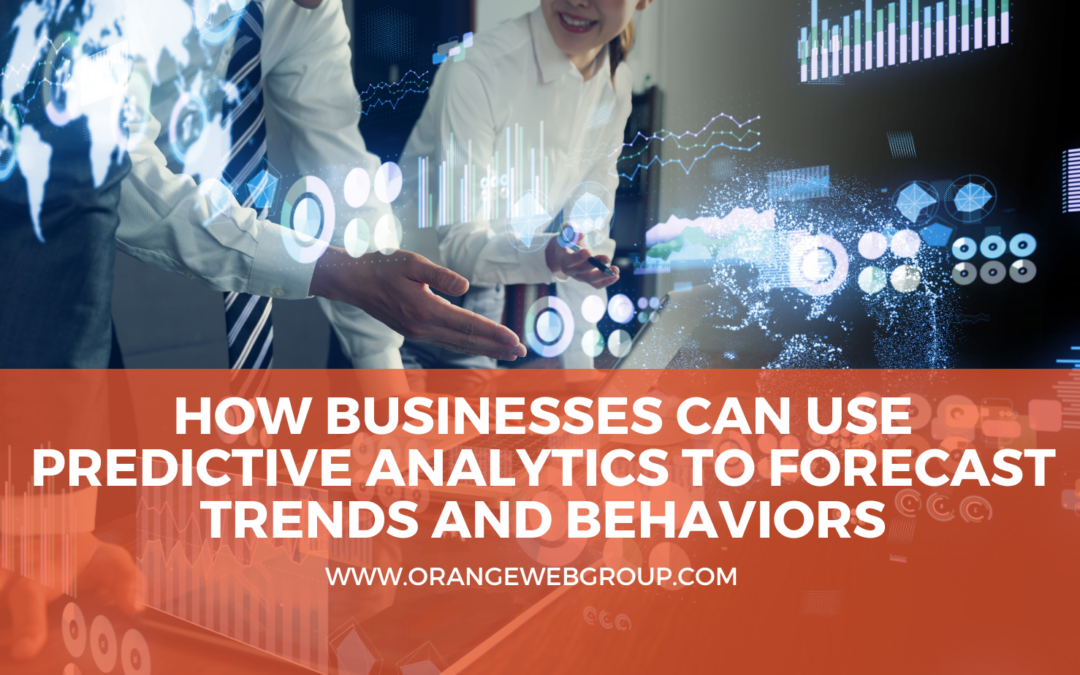In today’s data-driven world, businesses are constantly seeking ways to gain a competitive edge. One of the most powerful tools at their disposal is predictive analytics for businesses. By leveraging historical data and advanced algorithms, predictive analytics enables businesses to forecast trends and behaviors, providing invaluable insights for decision-making. In this blog, we will explore how businesses can harness the power of predictive analytics to stay ahead of the curve.
1. Understanding Predictive Analytics
Predictive analytics involves using statistical techniques, machine learning algorithms, and data mining to analyze historical data and make predictions about future events. By identifying patterns and trends in the data, businesses can make informed decisions that drive growth and improve efficiency.
2. Applications of Predictive Analytics in Business
Predictive analytics can be applied across various industries and business functions. Here are some key applications:
A. Customer Insights and Personalization
Predictive analytics helps businesses understand customer behavior and preferences. By analyzing past purchase history, browsing patterns, and demographic data, businesses can predict future buying behavior and tailor marketing strategies accordingly. Personalized recommendations, targeted promotions, and improved customer segmentation are just a few examples of how predictive analytics for businesses enhances customer experiences.
B. Sales Forecasting
Accurate sales forecasting is crucial for business planning and resource allocation. Predictive analytics models can analyze historical sales data, market trends, and external factors to forecast future sales with high precision. This enables businesses to optimize inventory levels, allocate resources efficiently, and set realistic sales targets.
C. Risk Management
In industries such as finance and insurance, predictive analytics plays a vital role in risk management. By analyzing historical data and identifying risk factors, businesses can predict potential risks and take proactive measures to mitigate them. For example, insurance companies can use predictive analytics to assess the likelihood of claims and set premiums accordingly.
D. Operational Efficiency
Predictive analytics can optimize various operational processes, leading to increased efficiency and cost savings. For instance, in supply chain management, predictive models can forecast demand, optimize inventory levels, and streamline logistics. Similarly, in manufacturing, predictive maintenance can reduce downtime by predicting equipment failures before they occur.
E. Human Resources
Predictive analytics is also transforming human resources by helping businesses identify and retain top talent. By analyzing employee performance data, engagement levels, and turnover rates, businesses can predict which employees are at risk of leaving and implement strategies to improve retention. Additionally, predictive models can assist in workforce planning and talent acquisition.
3. Implementing Predictive Analytics in Your Business
Implementing predictive analytics for businesses involves several steps:

A. Data Collection and Preparation
The first step is to collect and prepare the data. This includes gathering historical data from various sources, cleaning and preprocessing the data, and ensuring its quality and consistency. The more comprehensive and accurate the data, the better the predictive models will perform.
B. Choosing the Right Tools and Techniques
Selecting the appropriate predictive analytics tools and techniques is crucial. Businesses can choose from a variety of machine learning algorithms, statistical methods, and software platforms based on their specific needs and expertise. It’s important to stay updated with the latest advancements in predictive analytics technology.
C. Building and Training Models
Once the data is ready, businesses can build and train predictive models. This involves selecting the right features, tuning the algorithms, and validating the models using historical data. Machine learning experts and data scientists play a key role in this process, ensuring the models are accurate and reliable.
D. Deploying and Monitoring Models
After the models are trained, they can be deployed in real-world scenarios. It’s essential to continuously monitor the models’ performance and make adjustments as needed. Predictive models should be regularly updated with new data to maintain their accuracy and relevance.
E. Interpreting and Acting on Insights
The final step is to interpret the insights generated by predictive analytics and take appropriate actions. Businesses should establish a clear process for translating predictions into actionable strategies. This may involve collaboration across different departments to ensure the insights are effectively implemented.
4. Challenges and Considerations
While predictive analytics offers significant benefits, there are also challenges to consider:
- Data Privacy and Security: Ensuring the privacy and security of data is paramount. Businesses must comply with regulations and implement robust data protection measures.
- Data Quality: The accuracy of predictions depends on the quality of the data. Businesses must invest in data quality management to avoid erroneous insights.
- Expertise: Implementing predictive analytics for businesses requires specialized skills. Businesses may need to invest in training or hire data scientists and machine learning experts.
- Change Management: Adopting predictive analytics may require changes in business processes and culture. It’s important to manage these changes effectively to ensure successful implementation.
Conclusion
Predictive analytics is a powerful tool that enables businesses to forecast trends and behaviors, providing a strategic advantage in a competitive market. By leveraging historical data and advanced algorithms, businesses can gain valuable insights, optimize operations, and enhance customer experiences. While there are challenges to consider, the benefits of predictive analytics for businesses far outweigh the risks. As businesses continue to embrace digital transformation, predictive analytics will play an increasingly important role in driving growth and innovation.
If you’re interested in exploring how predictive analytics can benefit your business, contact Orange Web Group today. Our team of experts can help you harness the power of predictive analytics to make informed decisions and stay ahead of the competition.




